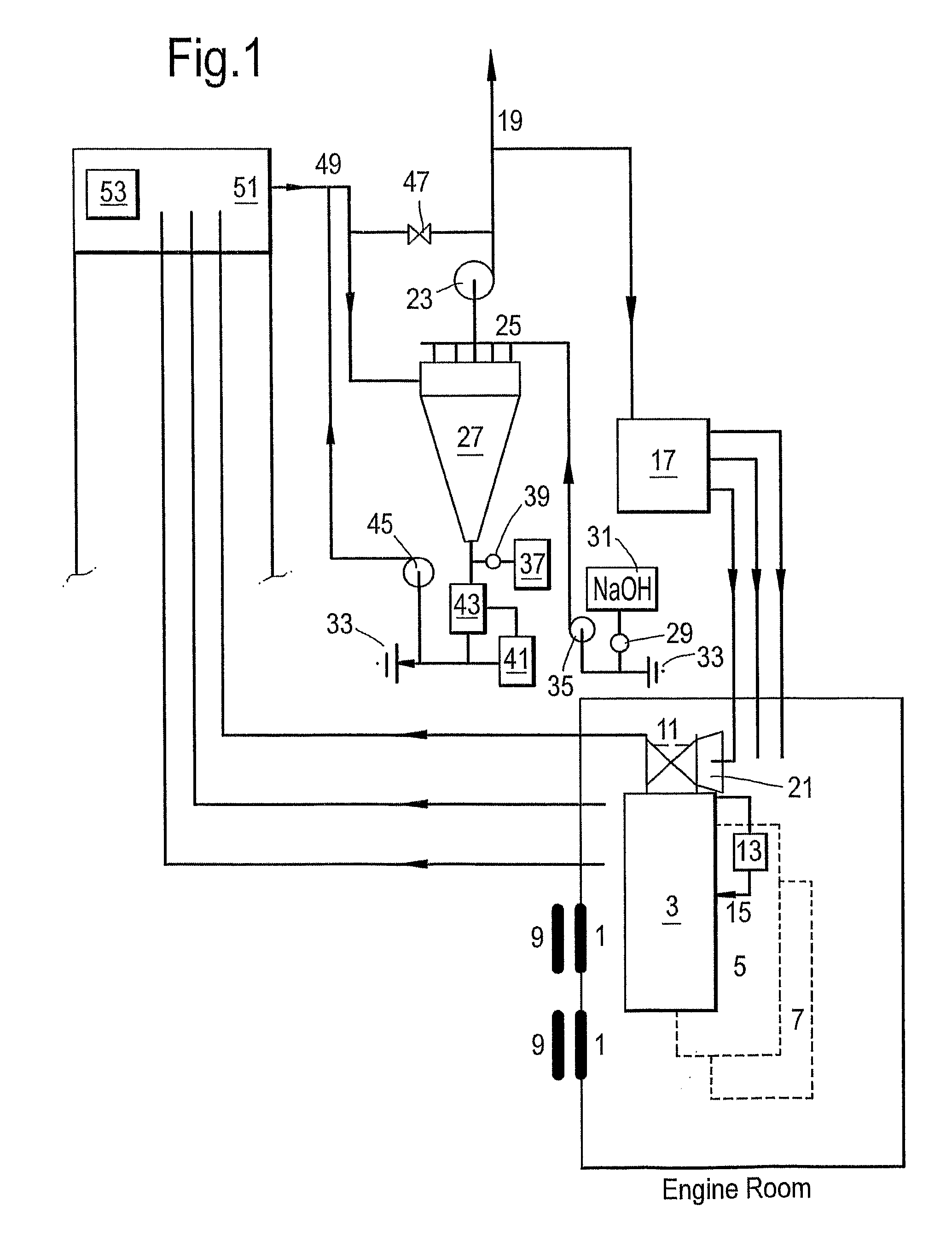Methods and device for low contamination energy generation
a low-contamination energy and energy generation technology, applied in the direction of machines/engines, mechanical equipment, separation processes, etc., can solve the problems of high cost of fuel, and high cost of fuel, and achieve the effect of increasing the load of the engin
- Summary
- Abstract
- Description
- Claims
- Application Information
AI Technical Summary
Benefits of technology
Problems solved by technology
Method used
Image
Examples
examples
[0152]Referring to FIG. 1, an engine room onboard a ship or oil exploration unit, is fed air through one or more fans (1) to meet the scavenging air requirements for the diesel engines (3) (5) (7) and boilers (not shown) on board such vessels. One or more fans (1) may be turned off during a period of time when the engines are not in use. Filters (9) may or may not be attached to the fan.
[0153]Air in the engine room is drawn in through coarse filter pads (9) into the turbocharger (11) where it is compressed for up to about 1-3 bars (pending engine loads). The heated compressed air is cooled by the air cooler (13) down to about 40-45° C. before accessing the cylinders of diesel engines (3) (5) and (7). The air cooler (13) relies on application of water for cooling, with the amount of water applied being sufficient to keep the scavenging air constant while ambient temperature changes. Conditions will be adjusted to accommodate engine use in different climactic conditions, for example, ...
PUM
| Property | Measurement | Unit |
|---|---|---|
| velocity | aaaaa | aaaaa |
| v/v | aaaaa | aaaaa |
| pressure | aaaaa | aaaaa |
Abstract
Description
Claims
Application Information
 Login to View More
Login to View More - R&D
- Intellectual Property
- Life Sciences
- Materials
- Tech Scout
- Unparalleled Data Quality
- Higher Quality Content
- 60% Fewer Hallucinations
Browse by: Latest US Patents, China's latest patents, Technical Efficacy Thesaurus, Application Domain, Technology Topic, Popular Technical Reports.
© 2025 PatSnap. All rights reserved.Legal|Privacy policy|Modern Slavery Act Transparency Statement|Sitemap|About US| Contact US: help@patsnap.com



